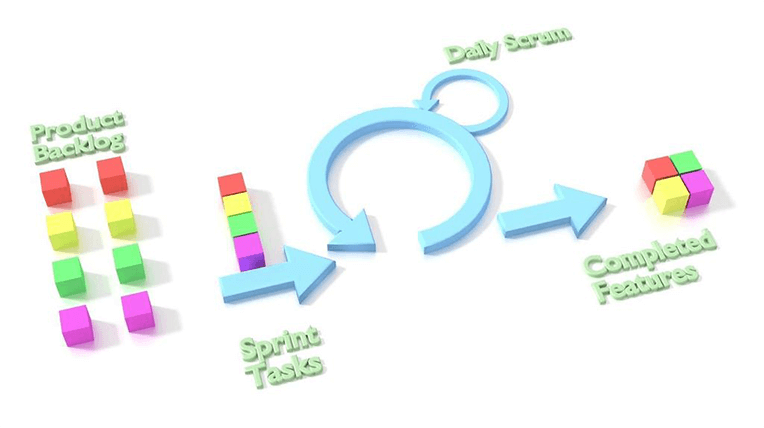All people should be treated equally. However, when it comes to management, specific individuals may demand a different approach—and introverts are one such example.
Introverts are often misrepresented in modern society. They’re seen as isolated, shy, and unforthcoming, which is far from true. The fundamental difference between an introverted and an extroverted person lies exclusively in the types of settings that energize them. The former need short breaks from social interactions to recharge, while the latter need to socialize to liven up. However, it’s important to stress that these are gross oversimplifications of their identities.
As a manager or team member, it’s important to consider these dimensions of human personality when trying to bond with people and help them reach peak efficiency and motivation.
In today’s article, we’ll take a closer look at what you should know about introverts, what their needs are, and what managers should do to provide them with the necessary support at work.

What does it mean to be introverted?
The first and probably most important thing that needs to be pointed out is that being introverted is by no means a deviation from the so-called norm. Every person out there is born with a temperament—a specific way they get energized and how that shapes their interaction with their surroundings. Extroversion and introversion are both innate temperaments that are predetermined by our genes. Basically, we’re all born with them.
Introverts typically prefer environments that aren’t too stimulating. The main reason behind this choice is that people with this temperament often find social events taxing and need some time alone to restore their energy levels. This behavior pattern is primarily due to introverts’ peculiar brain chemistry—specifically the way their brains respond to dopamine. Simply put, introverts are much more sensitive to this feel-good hormone, whereas extroverts can’t get enough of it. As a result, the former need to isolate for a bit after being zapped with a cocktail of hormones they have a low tolerance to. This is where the most common misconception about people with this temperament stems from—they’re generally considered shy, aloof, and even arrogant.

Dispelling common myths
The misunderstanding of how introverts function in society has sprung a variety of myths about them. They’re often seen as arrogant, disinterested, and even stuck up. However, it’s safe to assume that very few introverts would agree with these descriptions.
They’re socially awkward
Introverts function very well in social settings and don’t really find it complicated to interact with people. In fact, according to a 2016 study, most US-based lawyers are introverted.
Plus, a study published in the Journal of Personality and Individual Differences suggests that extroverts and introverts a near-equal amount of time alone and socializing. More importantly, the same paper indicates that introverts experience the same bump in happiness during social interactions as extroverts do.
For introverts, social interactions are something they must balance continuously, and it would be unfair to say that they prefer solitude over communication. Too much solitude can leave them feeling insecure, while excessive exposure can make them feel overstimulated and tired. However, this shouldn’t be treated as a need to take a break from people. Instead, it’s a respite from stimulation.
They’re kind of arrogant
Social interactions are fairly taxing for introverts, which often dissuades them from engaging in casual cooler chatter—and this shouldn’t be interpreted as disinterest on their part. For them, social interactions need to be meaningful.
They’re rude
Given how sensitive introverts are to the dopamine triggered by social interactions, they may sometimes refuse to communicate with people, especially when they need to “cool off.” Rather than being offended by this need, it’s always best to give introverts some extra space. They’ll be much happier to chat when they recharge their social batteries.
Introverts are depressed and anxious
This is probably one of the most common misconceptions about introverts. However, that is not to say that it’s entirely false. To dispel this myth, we need to get into semantics for a bit.
In psychology, there’s a strong connection between extroversion and happiness. There’s an extensive body of research that suggests that people that are extroverted are less likely to be depressed. On the other hand, there’s plenty of research that suggests that people act in an outgoing and energetic manner when they are happy or feel good.
But there’s an important difference that needs to be pointed out—being introverted does not by default make you depressed or anxious. It’s critical that we distinguish between how people are and how people act.
The unfortunate part is that introverts sometimes lose control over isolation and tend to withdraw from their social circles for too long, indeed making them sadder and more disconnected.

How to work with introverts
Taking employee temperaments into account is an often overlooked facet of management in the modern workplace, and introverts are the ones who suffer most from this. While being thoughtful of their colleagues’ introversion or extroversion isn’t necessarily a manager’s obligation, it’s safe to say that everyone would benefit from a more mindful approach.
Failing to adjust to individual requirements can make some people feel misplaced and disregarded, making their life at work less and less comfortable.
On the other hand, making the necessary adjustments to accommodate introverted employees will only enable them to be more productive, accountable, and happy at work.
1. Tailor your interactions
A thoughtful manager should pay close attention to the temperaments and personalities of the people in their team. Introverts can often get overshadowed in social settings by their more extroverted peers, and it should be taken into account at all times. Interrupt an introvert a few times, and they’ll feel sidelined and will most likely be dissuaded from being part of the conversation in team meetings.
The transition to the work-from-home model has only underlined the importance of proper “temperament-conscious” management. Leaders can leverage a variety of tools to make sure that everyone’s voice is heard. A good example is the hand-raising feature available in most video conferencing tools. Plus, it’s always a good idea to wait a few seconds after a person has finished speaking to make sure that nobody gets cut off.
Another opportunity managers can explore is asynchronous communication. Introverted people or people with social anxiety will greatly appreciate the choice not to join non-essential calls and provide their input for the team’s daily standups via email.
2. Respect space
If your company has gone back to an office setting, this is a good opportunity to rethink how people use the space. Needless to say, open-space environments can be quite tiring for introverts, and having a dedicated “recharging” area where they can spend some time alone and in quiet would be extremely beneficial.
A few minutes of silence can go a long way for an introverted person and, to be extremely pragmatic, it would make them much more efficient, and it would be totally worth the investment.
Furthermore, introverts are known to be fairly independent. Therefore, making some small changes to your workspace that would allow them to function well will greatly impact their satisfaction and inspiration.

3. Be an ally
By now, we’ve established that introverted people tend to differ from extroverts in regards to how they feel about social interaction. Unfortunately, these differences can significantly impact their success at work. They often aren’t as fond of self-promotion, even if they have an excellent skill set and a wide array of relevant expertise. Typically, they prefer their work to do the talking, but that can often impede their growth within an organization.
That, however, does not mean that managers should speak for them or protect them in a patronizing manner. Instead, they should seek to allot them the time and provide them with the right conditions to express themselves.
Something that most introverts will find helpful is preventing interruptions. Being able to speak freely without being constantly cut off will allow them to flourish and provide valuable feedback. Another extremely useful thing to do is to gently encourage introverts to partake in conversations and reward them for doing so.
Some introverts feel uncomfortable being in the spotlight since too much attention to their person can be quite taxing to them. Unless interacting with large groups of people is their actual responsibility, it’s best not to force them to do so.
4. Provide opportunities to lead
Today’s work environment strongly favors extroverted people for some of their innate qualities—they’re outgoing and charismatic, they have awesome social skills, and they can get a crowd’s attention. While these characteristics are excellent for a person in a leadership position, that is not to say that people that don’t possess them aren’t suited for one.
In fact, introverts make great leaders as well, since they often have excellent listening abilities, they’re less competitive, and they very rarely engage in corporate politics. These qualities combined make a manager that is less interested in proving a point and is instead focused on achieving the greater good for the people in their team and the organization as a whole.
By providing introverts with the opportunity to lead, you can leverage the qualities that come with their temperament, along with their individual attributes.

5. Give time to think, plan, and prepare
A team and company will at some point experience a significant problem that demands a quick and well-thought-out solution. While there’s no ground to assume that there’s a difference in the quality of reasoning between introverts and extroverts, the former typically have more time to analyze all the ins and outs of the situation.
The same applies to meetings where important decisions are made—introverts often find it complicated to find solutions on the spot, so giving them a heads-up and expanding on the agenda of a meeting will help them generate better ideas.
Emergencies are just a part of life—both people and businesses can’t eliminate them entirely, but by giving introverts some extra time to think and prepare, you’re increasing your chances of addressing pressing issues in an adequate manner.
And I know what you might be thinking, “we can’t always afford to give certain people an extra day to ponder over extremely time-sensitive issues”—and that’s a fair point. But would you rather go with a half-baked solution or one that stems from a more analytical and calculated approach?
6. Be thoughtful about engaging them
Unfortunately, a lot of the things that engage extroverts could have a reverse effect on introverts. For instance, most extroverts would probably be happy to hear a peer or manager publicly show their appreciation for the work they’ve done. Introverts—not so much.
If you’d like to articulate the value that an introvert has brought through their work, consider sending them a personal and thoughtful email. Forcing them into social interaction with lots of people involved won’t necessarily make them unhappy, but there’s a possibility that it might intimidate them, so it’s probably a good idea to avoid doing so, especially if they’re relatively new to the team or their position.
The same applies to receiving feedback from them. As we mentioned above, introverts may not be the most vocal in a meeting. Still, if approached individually, you’ll most certainly get their well-thought-out opinion on the subject matter.
As a manager, you may also consider offering your help with social interactions. For instance, if your introverted colleague needs to deliver a presentation, feel free to offer to do it for them. Once they see that their work was received well, they may find it more comfortable with doing it personally the next time.
7. Don’t be harsh
Unfortunately, most introverts are their worst critics. Add some harsh criticism from a peer or manager, and that’s a recipe for a ruined day or week. One of the best qualities introverted people possess is active listening. Being too straightforward with them isn’t necessary and pretty much unproductive. If you’re looking to provide them with suggestions regarding their work or performance, do so in a one-on-one meeting and make sure to deliver the information thoughtfully. Approaching this task with patience is key.
More importantly, introverts tend to extensively analyze their interactions. Discussing pressing issues in a calm and honest manner will only provide them with more opportunities to find the solution to the problem at hand.
It’s important to take this into account when training and retraining introverts. They can sometimes need more time to process large amounts of information due to their analytical mindset. They often need some extra time to understand all the details, peculiarities, and responsibility spectrum of their role.
And, last but not least, be prepared to answer lots of questions.

8. Reward them the right way
Introverts often dismiss public praise for the work they do. They appreciate it, but these things can draw more attention to their person than they’d like it to.
However, that doesn’t mean that we should just let their achievements go under the radar. As a manager, it’s important to understand how introverts prefer to be rewarded for the work they do. After all, all people need to hear good things about their efforts in order to stay motivated and accountable; and introverts are no exception. They need appreciation, just not the attention.
Ensuring that everyone on your team has their temperaments and differences taken into account will invariably help the entire crew grow into their roles, be happier and more productive.
It’s also important to underline that these principles aren’t meant for management only. Everyone on the team should take the time to understand their peers and how they can optimize their communication with them to ensure that everyone is satisfied and comfortable.
The bottom line
Managing a team of people with different temperaments can be challenging. However, with the right amount of insight and mindfulness, leaders can significantly improve the communication within their team, as well as increase their individual productivity and satisfaction at work.

















































